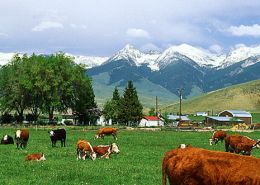Assessment of Smallholder Indigenous Poultry Producer Viability After HPAI in Lao PDR
Place: Lao PDR • Dates: 2009-2010 • Partner: FAO
Smallholder indigenous poultry production is ubiquitous in Lao PDR and represents a crucial income generating opportunity for one of the poorest countries in the Greater Mekong Subregion (GMS). Much like other countries in the GMS, highly pathogenic avian influenza (HPAI) outbreaks and the related control measures have adversely affected smallholder production. Despite the importance and prevalence of smallholder poultry production in Lao PDR, there has been little academic work conducted in this sector and information is extremely limited. This information gap creates a serious burden to the effective monitoring and control of HPAI, as a regionally coordinated effort is needed. Furthermore, people’s livelihoods are at stake and an in-depth understanding of the smallholder poultry sector is necessary to insure control policies do not adversely affect production.
Survey work conducted in Lao PDR aimed to support evidence-based solutions to these problems. Questionnaires consisted of two distinct parts covering the actors in the market chain that supply poultry products and the urban consumers of those goods. Market chain surveys included detailed producer, trader, and vendor surveys that can provide a supply chain audit, linking producers to consumers. Furthermore, these surveys provide detailed data on the total inputs and outputs regarding poultry production and marketing operations, which is instrumental in understanding how future policies or projects may affect cost structures. Additionally market chain surveys can identify the direct and indirect costs and other enterprise effects of culling and related HPAI control measures, financial access and capital constraints within poultry production, the role of contract farming systems, and any other institutional factors limiting smallholder adaptability. The second part of surveys consisted of household consumer surveys. These surveys were intended to assess consumer poultry purchasing habits, preferences, and willingness to pay for certified birds. Survey data can be used to provide recommendations for sustainable market participation by smallholder producers and will strive to increase product quality, safety and revenue across the traditional poultry supply chain.
Most Recent Entries

Low Carbon Biomass Conversion in the Sierra Nevada





